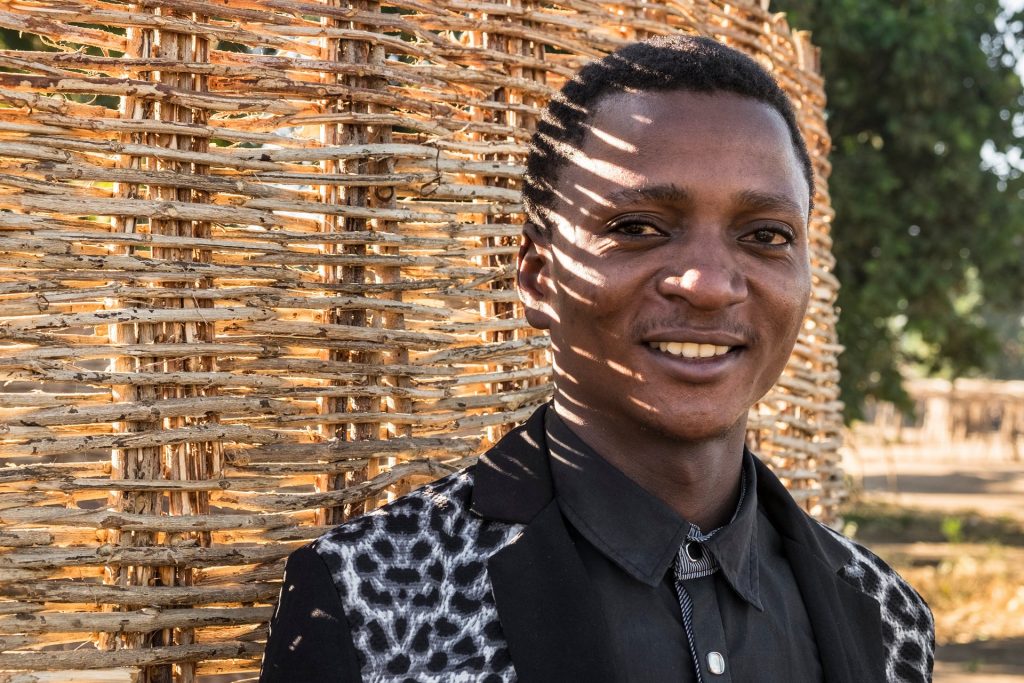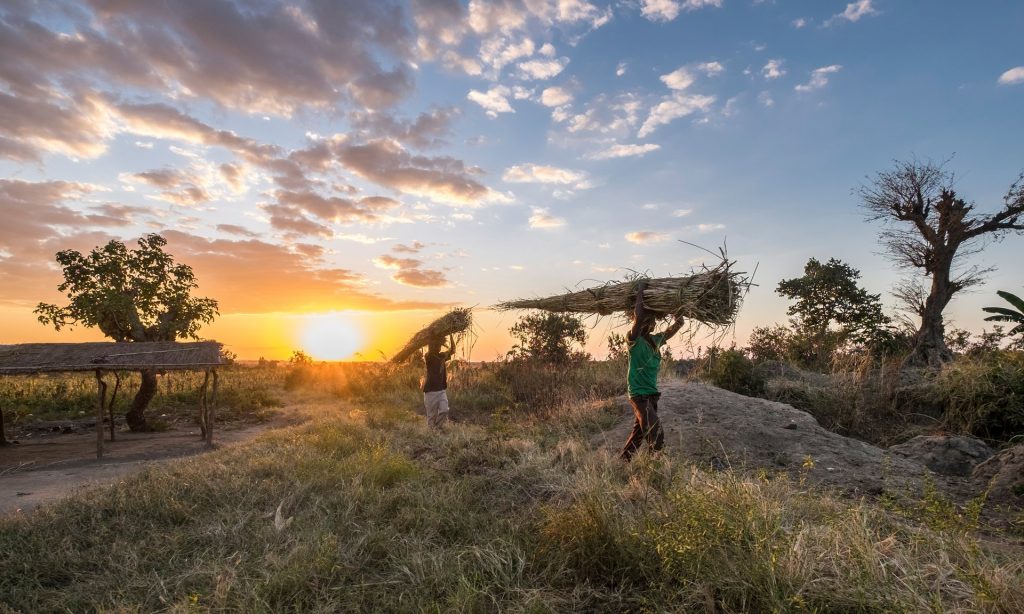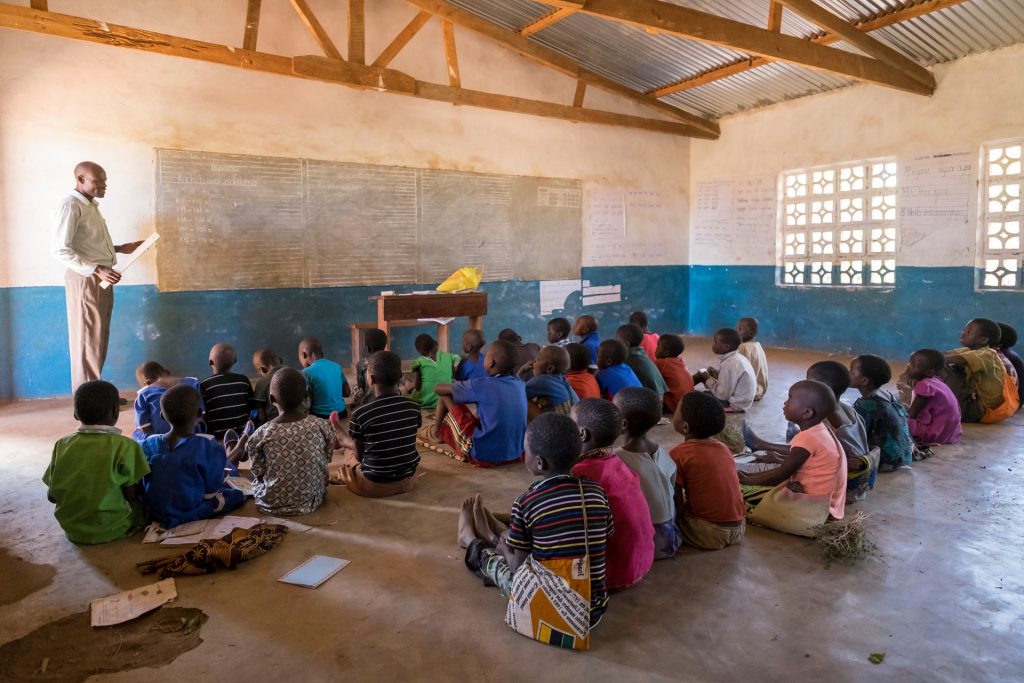The four young men standing near the library in the centre of the dusty village of Gumbi have not seen each other for many months. It’s the school holidays in Malawi and they’ve come back to see family and friends. They joke around, laugh about their work, the changes they can see in the village and each other. They look strong, confident and serious, happy to be home.
At 23, James Gomani is the second oldest. He is at university, studying accountancy. His friends Kennedy and Josephy Jimmy, and Yohane Lungu, have just qualified as teachers and are working 100 miles away in villages near Lake Malawi. It’s the first time in a year the four have been together in their dirt-poor village of subsistence farmers, and they talk about first jobs and their hopes.
I first met them in 2002, when they were boys. They were unable to speak a word of English, Malawi’s official language, and used to walk miles barefoot to primary school, collect water from the village pump and work in their family’s maize fields. Those were bad times, they remember. Along with many thousands of other villages in one of the poorest countries on Earth, Gumbi was racked by famine when a long drought destroyed crops two years running.

James was seven then, an only child after his brother and sister died. He and his three friends suffered badly when the food ran out and there was no prospect of another harvest for many months. They remember going hungry, being taught by rote in the shade of a tree and being taken out of school when their parents had no money and needed them in the fields. “No one had any hope for the future,” James says.
But many things have changed since then – and Guardian Weekend readers played a part in that. This is the story of how the village with just one book became a village of teachers.
***
I first visited Gumbi in March 2002, at the height of the Malawian food crisis, when 80% of the small southern African country of 12 million people were said to be hungry. I had been travelling with the Irish charity Concern, reporting from health clinics, hospitals and feeding centres. It was distressing. Wherever we went, there was shocking destitution, malnutrition and death. In one hospital, at Nambuma, a small town about 50km west of the capital Lilongwe, many of the women and children said they were from a place called Gumbi. Why is it so bad there, I asked a government health official called Patrick Kamzitu.
“Let’s go and see,” he said.
From Nambuma, you get to Gumbi past a huge brick church built by the White Fathers missionaries and a football pitch, down a warren of unsigned narrow tracks through fields of maize. The village consisted then of about 70 mud-built, straw-thatched houses. The place seemed deserted and many structures had no roofs. A few women sat under a tree, their infants listless. A tired-looking man introduced himself as “Mr Jamu, the chief”.
Gumbi had nothing, he apologised. No clean water, no shops and no assets beyond a few bicycles and ox carts. There was a single book in the village of about 400 people, there was no electricity or TV, no clinic, no school or shop, and everyone had run out of food. Gumbi had been hit particularly hard by the drought, he said, because everyone was desperately poor and no one had skills other than maize farming. The village was empty, because in times of hunger people leave to seek work elsewhere.
In those bad days, Gumbi’s “nkhokwe”, the traditional woven granaries in which families stored their maize, were all empty. Many children were being treated for malnutrition in the local hospital, and those who lived did what they always do in a major drought: they sold anything they could, to buy any food they could, at massively inflated prices.
Fit adults left the village to seek scarce day work on building sites or tobacco farms, children were taken out of school, and anyone left in the village ate maize stalks, leaves and berries, prayed for rains that they knew would not come for months, or for food aid to arrive. Some just waited for the end.
Two bad harvests in a row was very rare in Malawi, but in Lilongwe it became clear that this was a manmade famine. The IMF and donor countries, including the UK, had advised the government to sell off its grain reserves because they were expensive to maintain; the EU had said only a little food would be needed in the case of a local disaster. So rich traders had bought and hoarded food and were now selling it at excessive prices, while emergency supplies had been slow to reach landlocked Malawi.

I returned to the village three times that year, with the idea of following life through the famine. I watched as food aid arrived, and then the rains. That year 17 villagers died from malnutrition-related diseases, and nearly all the children suffered from the lack of food.
In December 2002, on a fourth and, I imagined, last visit to the village, five women told me about the issues they were facing. “Hunger is awful,” said Joyce. “I had a child who died of hunger. I went to the hospital but it was too late. I had five children who were malnourished. How can you send children to school if they are malnourished and ill?”
“We have been on the edge of life for a long time,” said Lucy. “It’s the very poor who have suffered. Here there are no rich people, but there are many people with nothing. Maybe we live, maybe we die.” She was beginning to see the children needed access to education. “We do not have the skills to go forward and change our lives. We need to know about other sorts of farming, we need to learn about doing other things. We have no one to teach us.” The women reasoned that without schooling, language and new skills, they would not survive.
***
The great hope of Gumbi at that time was a 13-year-old girl, Margaradena Njewa. She had come top of her class in the nearby Nambuma girls’ primary school, and had passed a national exam giving her entry to one of Malawi’s better, boarding secondary schools. By any standards in rural Malawi, this was an achievement, but for a young Gumbi girl it was a triumph.
The reality, though, was that it would cost the family about £80 a year to send her to the school. There were no scholarships and no money. Instead, she had been helped by the extraordinary sacrifice of her elder brother, Kennedy. So important did he consider his baby sister’s education for the future of the family and the village that he had sold his ox cart, his only means of earning money. It raised about £35, enough to pay for Margaradena’s first two terms.

